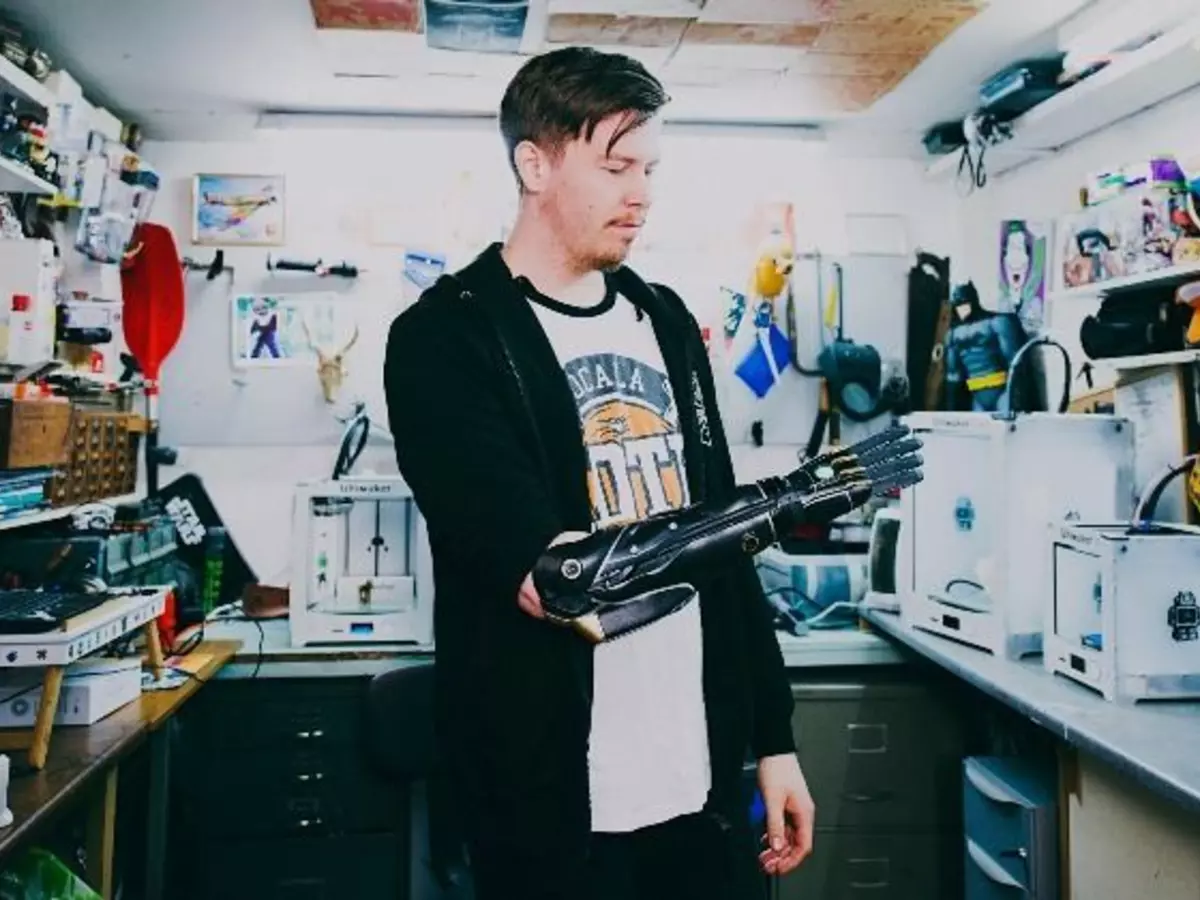This Guy Has The World's First 3D-Printed Bionic Arm Based On A Video Game
Daniel Melville is a gaming enthusiast from the UK. He¡¯s also missing an arm, but neither of those is his claim to fame. That comes from where those two facts coincide for some truly detailed fanboy excitement, that¡¯s literally a part of him now.

Daniel Melville is a video gaming enthusiast from the UK. He's also missing an arm, but neither of those is his claim to fame.
His notability comes from where those two facts coincide for some truly detailed fanboy excitement, that's literally a part of him now.

Open Bionics
You see, Melville wanted to get himself a bionic replacement so he could go do all the things he hadn't been able to since being born without a right arm. But rather than getting a generic robotic piece like some peasant, he decided he'd just get a working replica of the attachment the protagonist wears in the game Deus Ex.
Deus Ex is set in a futuristic world, where trans-humanism has taken root. When the main character, Adam Jensen, is grievously injured in an attack on his technology research firm, doctors give him a ton of cybernetic replacements, complete with cameras built into his eyes, iron kickers, a freaking mini missile launcher system, and the aforementioned arms that can punch through solid rock.

Adam Jensen, in all his augmented glory
Growing up with a prosthetic right arm, Melville found a character he could actually relate to in Adam Jensen. "He had these cool augmented arms and he was a badass, and I thought 'I'd like to be like that,' Melville told RedBull.com. Of course, he couldn't afford a bionic arm growing up.
Years later however, he got in touch with Joel Gibbard, the founder of Open Bionics. This UK-based company develops low-cost bionic hands, and Melville volunteered to become a tester for their newest experiment, the world's first 3D printed, multi-grip bionic hand and arm.

Acer
When Melville tenses the muscles in his arm, the electrical impulses are translated to the bionic piece and lets him close and open the fist. It lets him do a variety of things he couldn't with his prosthetic, including pick up objects with just his finger and thumb. "From day one, what fascinated me was that I could open and close my hand and pick things up like a piece of chalk whereas, when I was growing up, I couldn't do any of that," Melville said. "The last few years we have worked on changing the grip and making it stronger. The arm can take up to 8kg of weight, which is insane for a 3D printed bionic arm."
He's still hoping Open Bionics can push the technology even further though. "In the future, I hope for individual finger movement too so I can go to a heavy metal concert and do the horns," he said. And of course, that would also help him more effectively pursue his passion for gaming. "When I use my computer to play video games, I use my bionic arm because I can use the mouse to click on it and use my left hand to use the keyboard," he said. "I can't really use a controller because the thumb isn't as mobile as an actual thumb, so it is easier to use a PC than a console."

Acer
Melville now even designs his own bionic arms, and holds 3D printing workshops for kids and their parents to help them understand how the technology can benefit them. But as far as gaming goes, he thinks it might take a few years before esports players with disabilities can compete against able-bodied opponents.
"If you are passionate about something, you always find a way of doing it which is why I am always playing video games," he said. "This day and age we are living in, there are so many more immersive games with so many different things that can potentially happen."








